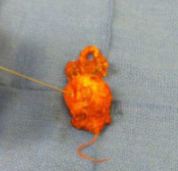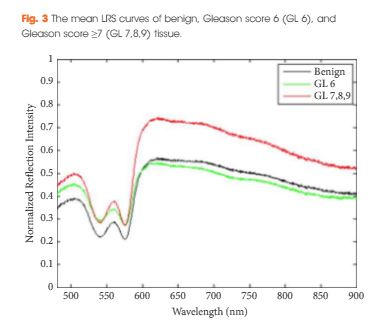Article of the Week: Detecting PSMs – using LRS on ex vivo RP specimens
Every Week the Editor-in-Chief selects an Article of the Week from the current issue of BJUI. The abstract is reproduced below and you can click on the button to read the full article, which is freely available to all readers for at least 30 days from the time of this post.
In addition to the article itself, there is an accompanying editorial written by a prominent member of the urological community. This blog is intended to provoke comment and discussion and we invite you to use the comment tools at the bottom of each post to join the conversation.
If you only have time to read one article this week, it should be this one.
Detecting positive surgical margins: utilisation of light-reflectance spectroscopy on ex vivo prostate specimens
Abstract
Objective
To assess the efficacy of light-reflectance spectroscopy (LRS) to detect positive surgical margins (PSMs) on ex vivo radical prostatectomy (RP) specimens.
Materials and Methods
A prospective evaluation of ex vivo RP specimens using LRS was performed at a single institution from June 2013 to September 2014. LRS measurements were performed on selected sites on the prostate capsule, marked with ink, and correlated with pathological analysis. Significant features on LRS curves differentiating malignant tissue from benign tissue were determined using a forward sequential selection algorithm. A logistic regression model was built and randomised cross-validation was performed. The sensitivity, specificity, accuracy, negative predictive value (NPV), positive predictive value (PPV), and area under the receiver operating characteristic curve (AUC) for LRS predicting PSM were calculated.
Results
In all, 50 RP specimens were evaluated using LRS. The LRS sensitivity for Gleason score ≥7 PSMs was 91.3%, specificity 92.8%, accuracy 92.5%, PPV 73.2%, NPV 99.4%, and the AUC was 0.960. The LRS sensitivity for Gleason score ≥6 PSMs was 65.5%, specificity 88.1%, accuracy 83.3%, PPV 66.2%, NPV 90.7%, and the AUC was 0.858.
Conclusions
LRS can reliably detect PSMs for Gleason score ≥7 prostate cancer in ex vivo RP specimens



